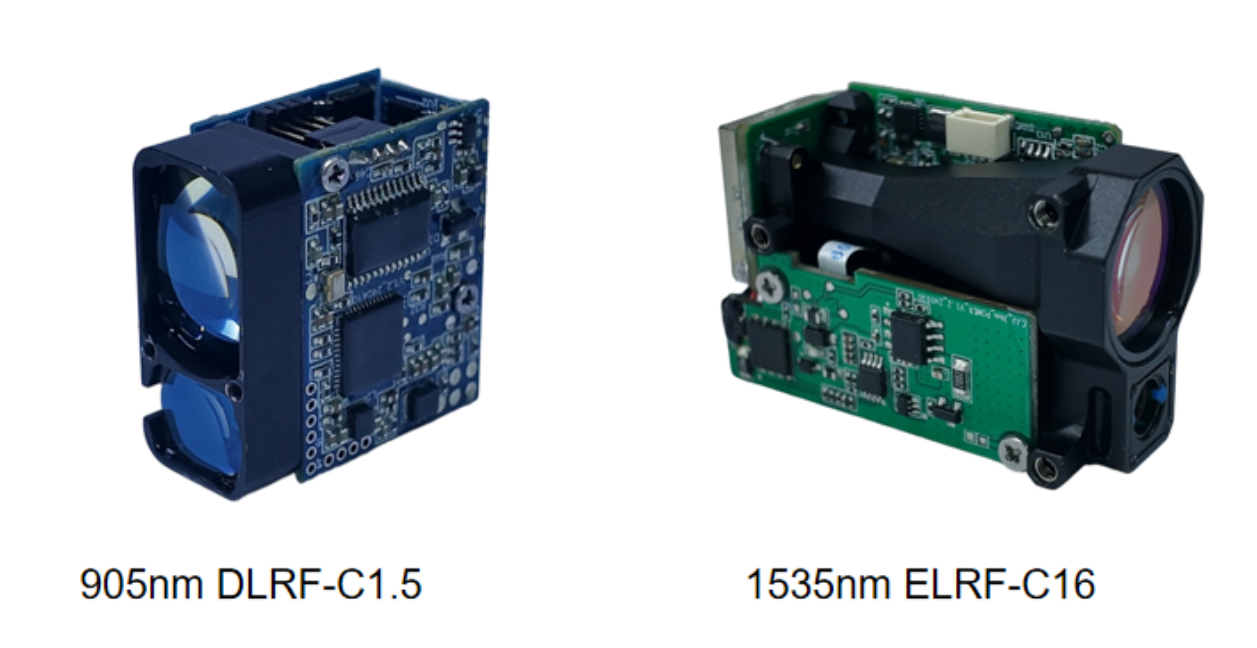In the selection of laser rangefinder modules, 905nm and 1535nm are the two most mainstream technical routes. The erbium glass laser solution launched by Lumispot provides a new option for medium and long-distance laser rangefinder modules. Different technical routes vary significantly in ranging capability, safety, and applicable scenarios. Choosing the right one can maximize equipment performance. Here is a detailed analysis.

Comparison of core parameters: a clear understanding of technical differences at a glance
● 905nm route: With semiconductor laser as the core, the bright source laser DLRF-C1.5 module has a distance measurement of 1.5km, stable accuracy, and high energy conversion efficiency. It has the advantages of small size (weighing only 10 grams), low power consumption, and cost friendliness, and does not require complex protection for regular use.
● 1535nm route: Using erbium glass laser technology, the ELRF-C16 enhanced version of the bright source can measure distances up to 5km, meeting Class 1 human eye safety standards, and can be viewed directly without damage. The ability to resist haze, rain and snow interference has been improved by 40%, and coupled with a 0.3mrad narrow beam design, the long-distance performance is even more outstanding.
Scenario based selection: Matching on demand is efficient
Consumer level and short to medium range scenarios: drone obstacle avoidance, handheld rangefinder, ordinary security, etc., 905nm module is preferred. The Lumispot product has strong adaptability and can be easily integrated into small devices, covering common ranging needs in various fields such as aviation, power, and outdoor.
Long distance and harsh scenarios: border security, unmanned aerial vehicle surveying, power inspection and other scenarios, the 1535nm erbium glass solution is more suitable. Its 5km ranging capability can achieve large-scale terrain modeling with a low false alarm rate of 0.01%, and it can still work stably in extreme environments.
Suggestions for selecting bright source lasers: balancing performance and practicality
Selection should focus on three core aspects: distance measurement requirements, usage environment, and safety regulations. Short to medium range (within 2km), pursuing high cost-effectiveness, choose 905nm module; Long distance range(3km+), high requirements for safety and anti-interference, choose 1535nm erbium glass solution directly.
Both modules of Lumispot have achieved mass production. The 905nm product has a long lifespan and low power consumption, while the 1535nm product is equipped with dual redundant temperature control system, suitable for extreme environments ranging from -40℃to 70℃. The communication interface supports RS422 and TTL interfaces and adapts to the upper computer, making integration more convenient and covering all scenario requirements from consumer level to industrial level.
Post time: Nov-17-2025
